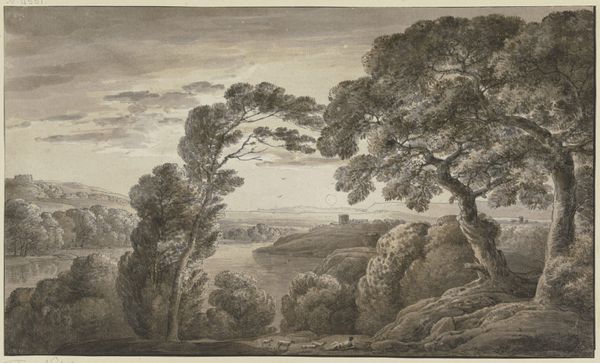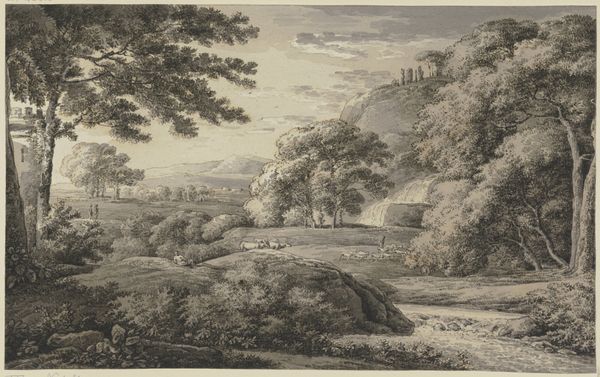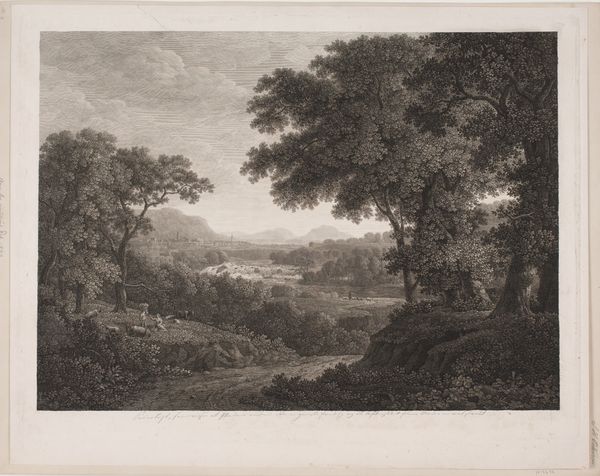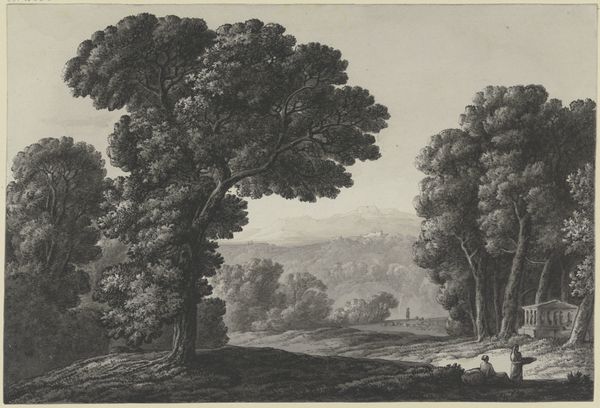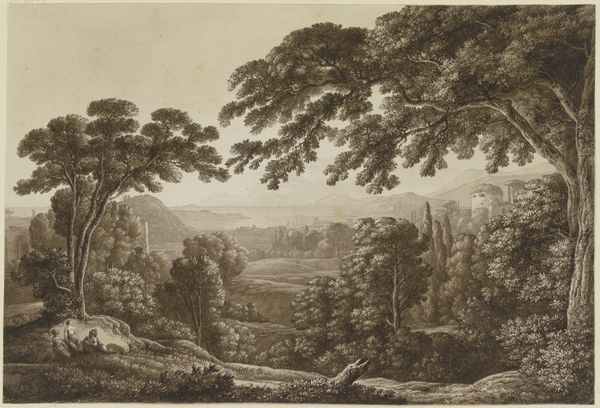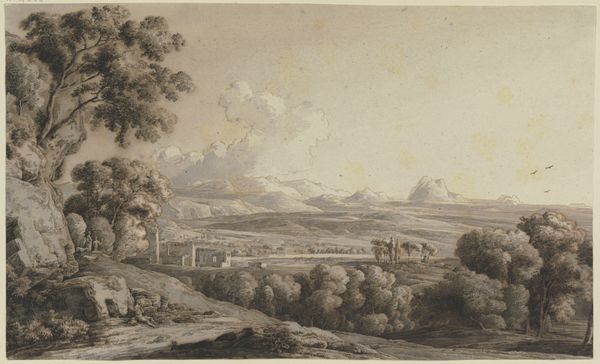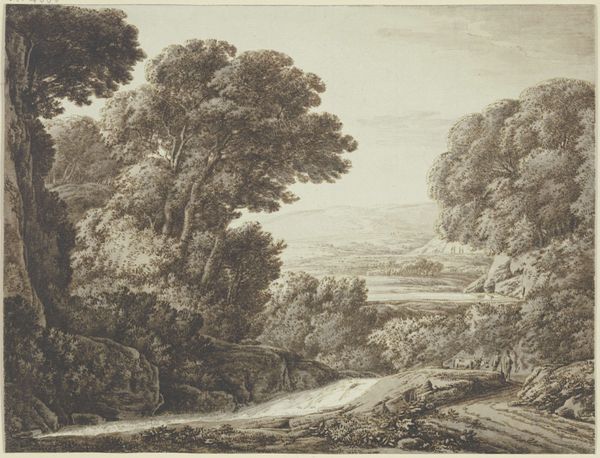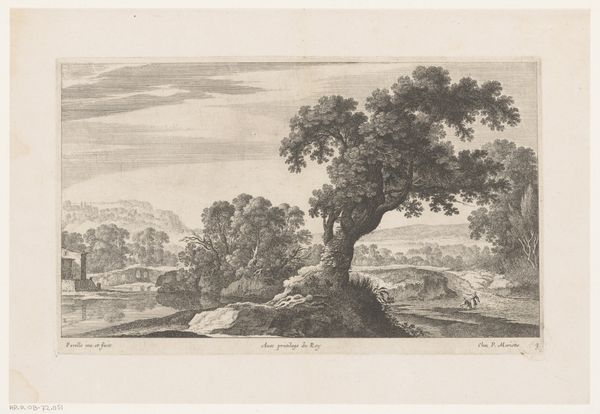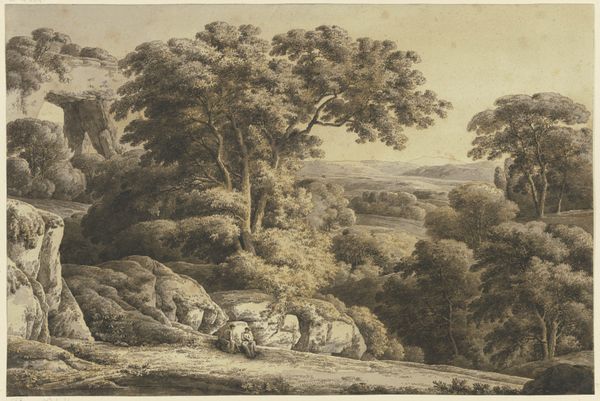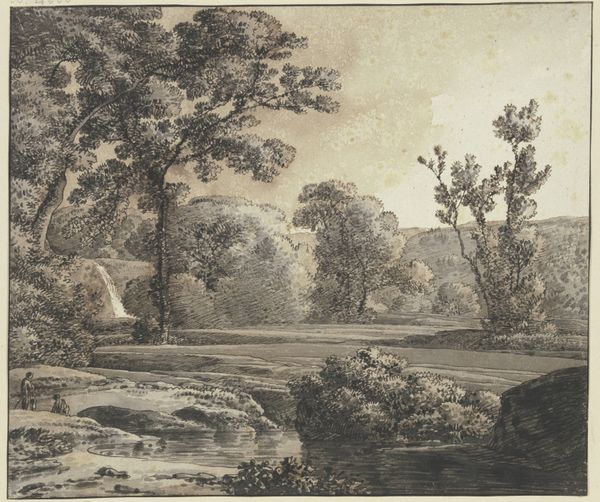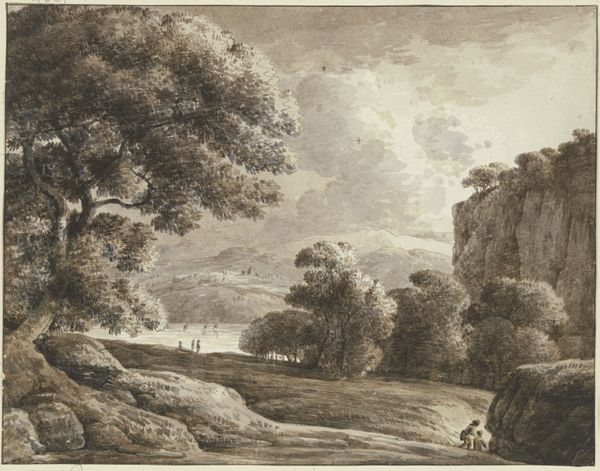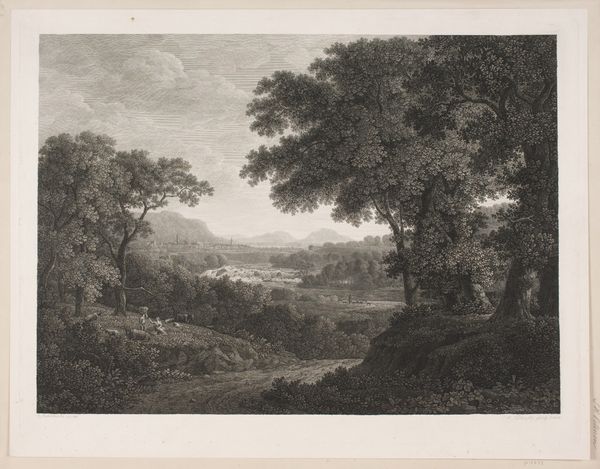
drawing, ink, pencil, graphite
#
drawing
#
landscape
#
charcoal drawing
#
figuration
#
ink
#
pencil drawing
#
romanticism
#
pencil
#
15_18th-century
#
graphite
Copyright: Public Domain
Curator: Looking at this vista…there's a quiet, melancholic feeling to it. All soft grays and delicate lines. It feels like a memory. Editor: It is indeed evocative. Here we have "View Over a Valley with Several Round Towers", a work made by Franz Kobell. Based on available data, it is catalogued as a drawing, and constructed with graphite, ink and pencil. Curator: A humble toolkit for such a grand vista! You can really see the layers in how he built up the landscape. The blending of graphite almost softens the entire world that's captured in this piece, wouldn't you say? Editor: Absolutely. And consider the materiality further: The physical act of repeatedly layering these media onto paper... Kobell isn't just depicting a view, but documenting a sustained interaction with the landscape itself. His choices are really a process of translating corporeal labor to paper, wouldn’t you agree? Curator: Yes! I was just about to suggest that it speaks to a certain… endurance. Standing there, pencil in hand, as time slowly molds the landscape onto the page, one stroke at a time. It’s like an artist preserving not only the place, but their moment there. There’s no grand sweeping pronouncements about the beauty of nature...just this intimate, laborious act of drawing. Editor: Precisely. We are also looking at the means of artistic production from the artist. Where was he situated and how accessible were such quality drawing material supplies, for example? This suggests an economic aspect for how and who these artworks would appeal to and become valued by at this period in art history. Curator: Well, whatever his situation, I’m drawn into the little dramas playing out, almost in the foreground too. Sheep meandering with a couple of human figures on that small hilltop - they almost feel placed there to represent the daily activities or interactions one might encounter when encountering nature in person. It also reminds me, again, that everything in time ages: both in the landscape of the vista itself, and the drawing representing such elements. Editor: An insightful read. So it is that, via these varied media and processes, "View Over a Valley" asks us to consider labor, vision, the economics of art, and endurance as tools of meaning, of considering our place within historical art. Curator: Yes. Maybe even as simple as observing beauty or appreciation from quiet dedication to one’s craft? Thank you, Franz Kobell for that thought today.
Comments
No comments
Be the first to comment and join the conversation on the ultimate creative platform.
